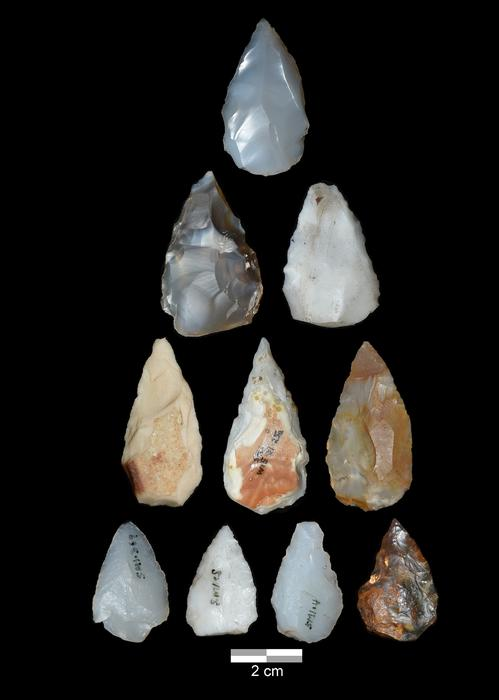The eruption of the Toba supervolcano is thought to have been the largest in our species’ existence. Inevitably, it changed the climate of the planet for a period. Findings from Ethiopia have now led some anthropologists to think Toba could also be key to one of the great mysteries of human evolution: what caused our final expansion out of Africa. It might even overturn a central assumption of how migrations from Africa occurred.
The genus Homo is thought to have left Africa close to a million years ago in the form of H. erectus, if not well before. Yet modern humans seem to have found it much more difficult. Whether this was because conditions had changed, or because of competition from our already established near relatives, we don’t know. However, it seems that H. sapiens expanded into western Asia and Europe on several occasions, without being able to stay.
Why then did a subsequent migration quickly lead to us reaching all parts of Eurasia and even Australia, followed much later by the Americas and Pacific islands? According to a large team of scientists, it might have been the result of an eruption thousands of kilometers from the closest population of Homo sapiens, in what is now Indonesia.
There is no doubt that the Toba eruption was enormous, releasing at least 2,000 cubic kilometers of material. Given the much smaller Tambora eruption produced a “year without a summer” from all the dust and ash blocking the Sun, it’s almost certain Toba caused cooling, possibly for several years. Quite how much is debated, but one estimate suggests a drop of 5°C (9°F), briefly returning the planet to ice age conditions.
Even though the climate would have returned to normal within a few years, our ancestors’ stores of food would have been almost non-existent at the time. This has inspired the Toba catastrophe theory, which proposes that post-eruption conditions reduced the human population to less than 10,000, creating a genetic bottleneck. The idea is much debated, with many arguing the climatic effects were smaller and the bottleneck’s timing is wrong.
Professor Curtis Marean of Arizona State University thinks the two mysteries might be connected, based on diggings in the horn of Africa, particularly Shinfa-Metema 1 in northwestern Ethiopia. Marean and colleagues found tiny volcanic glass shards known as cryptotephra at sites where humans lived, and that occupation of those sites continued after the layer in which the particles are found was deposited.

A tiny glass shard from the Toba supereruption, shows humans occupied the site before, during and after the volcanic winter.
Image credit: Racheal Johnsen
“This study confirms the results from Pinnacle Point in South Africa—the eruption of Toba may have changed the environment in Africa, but people adapted and survived that eruption-caused environmental change,” Marean said in a statement.
The Shinfa-Metema 1 site could have even deeper implications, Marean and colleagues think. The standard explanation of expansion out of Africa, by modern humans, other Homo species, and even other large mammals, is that they followed “green corridors” during wet periods that turned normally forbidding regions like the Sinai Desert to grass.
However, Shinfa-Metema 1, which is by the banks of a tributary of the Nile, tells a different story. Almost 16,000 pieces of chipped stone, mostly very small in size, have been found on one small patch, indicating a long-term human presence. Dating suggests it was occupied when conditions in the region were dry. Even when the river didn’t flow, the riverbed became a series of waterholes, the authors propose, and humans survived by hunting the animals that came to drink, unsporting as it may have been.
Fish intake rose in these times, presumably because they were easier to catch as the water levels fell.
Toba may have produced a particularly extreme dry season in northeastern Africa. Triangular stone tools found at Shinfa-Metema 1 from around the Toba era are thought to be the oldest evidence of archery in the world.

Stone points found at Shinfa-Metema 1 are more consistent with arrowheads than the tips of spears, making this the oldest evidence of archery in the world, coinciding with the Toba eruption.
Image credit: Blue Nile Survey Project
“As people depleted food in and around a given dry season waterhole, they were likely forced to move to new waterholes,” said Professor John Kappelman. “Seasonal rivers thus functioned as ‘pumps’ that siphoned populations out along the channels from one waterhole to another, potentially driving the most recent out-of-Africa dispersal.”
Instead of a “green corridor”, humans may have migrated to the edge of Africa along “blue highways”, and eventually found points to cross.
“This scenario makes it probable that the dispersing population would be reduced in size and is perhaps linked to the low genetic diversity of the modern humans that departed Africa,” the authors note.
The team doubt those who left their mark at Shinfa-Metema 1 were the ones to make the great migration, or even their ancestors. Nevertheless, they think the skills this population developed would have been common among survivors elsewhere in Africa, including close to potential crossing points into Asia.
The study is published in Nature.
Source Link: The Toba Supervolcano Potentially Almost Destroyed Humanity – But May Have Also Helped Us Spread